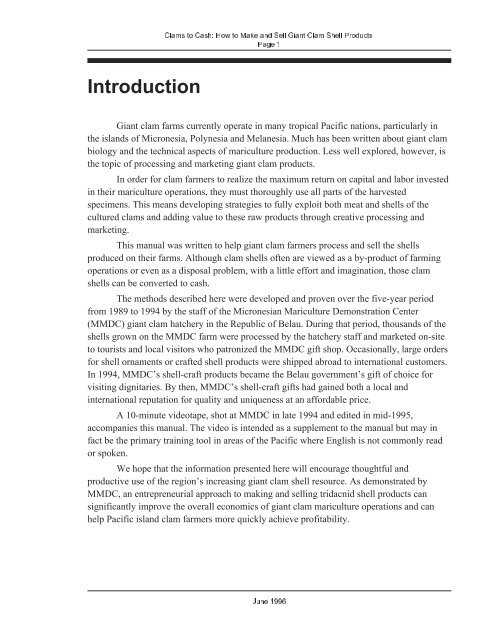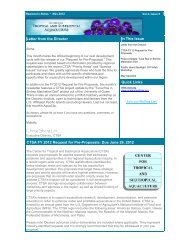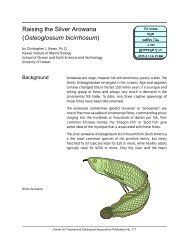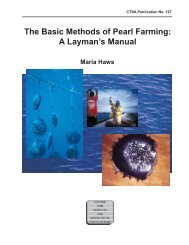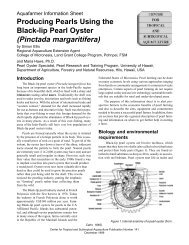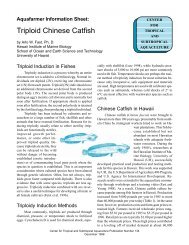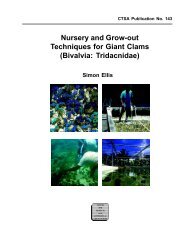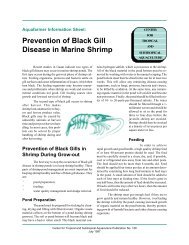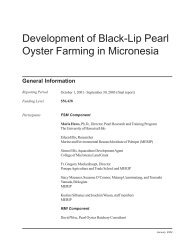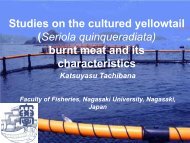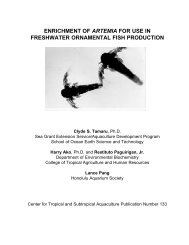Clams to Cash: How to Make and Sell Giant Clam Shell ... - eXtension
Clams to Cash: How to Make and Sell Giant Clam Shell ... - eXtension
Clams to Cash: How to Make and Sell Giant Clam Shell ... - eXtension
- No tags were found...
You also want an ePaper? Increase the reach of your titles
YUMPU automatically turns print PDFs into web optimized ePapers that Google loves.
<strong><strong>Clam</strong>s</strong> <strong>to</strong> <strong>Cash</strong>: <strong>How</strong> <strong>to</strong> <strong>Make</strong> <strong>and</strong> <strong>Sell</strong> <strong>Giant</strong> <strong>Clam</strong> <strong>Shell</strong> ProductsPage 1Introduction<strong>Giant</strong> clam farms currently operate in many tropical Pacific nations, particularly inthe isl<strong>and</strong>s of Micronesia, Polynesia <strong>and</strong> Melanesia. Much has been written about giant clambiology <strong>and</strong> the technical aspects of mariculture production. Less well explored, however, isthe <strong>to</strong>pic of processing <strong>and</strong> marketing giant clam products.In order for clam farmers <strong>to</strong> realize the maximum return on capital <strong>and</strong> labor investedin their mariculture operations, they must thoroughly use all parts of the harvestedspecimens. This means developing strategies <strong>to</strong> fully exploit both meat <strong>and</strong> shells of thecultured clams <strong>and</strong> adding value <strong>to</strong> these raw products through creative processing <strong>and</strong>marketing.This manual was written <strong>to</strong> help giant clam farmers process <strong>and</strong> sell the shellsproduced on their farms. Although clam shells often are viewed as a by-product of farmingoperations or even as a disposal problem, with a little effort <strong>and</strong> imagination, those clamshells can be converted <strong>to</strong> cash.The methods described here were developed <strong>and</strong> proven over the five-year periodfrom 1989 <strong>to</strong> 1994 by the staff of the Micronesian Mariculture Demonstration Center(MMDC) giant clam hatchery in the Republic of Belau. During that period, thous<strong>and</strong>s of theshells grown on the MMDC farm were processed by the hatchery staff <strong>and</strong> marketed on-site<strong>to</strong> <strong>to</strong>urists <strong>and</strong> local visi<strong>to</strong>rs who patronized the MMDC gift shop. Occasionally, large ordersfor shell ornaments or crafted shell products were shipped abroad <strong>to</strong> international cus<strong>to</strong>mers.In 1994, MMDC’s shell-craft products became the Belau government’s gift of choice forvisiting dignitaries. By then, MMDC’s shell-craft gifts had gained both a local <strong>and</strong>international reputation for quality <strong>and</strong> uniqueness at an affordable price.A 10-minute videotape, shot at MMDC in late 1994 <strong>and</strong> edited in mid-1995,accompanies this manual. The video is intended as a supplement <strong>to</strong> the manual but may infact be the primary training <strong>to</strong>ol in areas of the Pacific where English is not commonly reador spoken.We hope that the information presented here will encourage thoughtful <strong>and</strong>productive use of the region’s increasing giant clam shell resource. As demonstrated byMMDC, an entrepreneurial approach <strong>to</strong> making <strong>and</strong> selling tridacnid shell products cansignificantly improve the overall economics of giant clam mariculture operations <strong>and</strong> canhelp Pacific isl<strong>and</strong> clam farmers more quickly achieve profitability.June 1996


